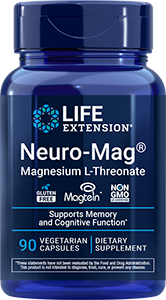
Newsletter
Newsletter
Plant Compound Improves Metabolic Markers in People with Central Obesity

A trial found reductions in cholesterol and other markers of metabolic risk among people with central (abdominal) obesity who were given lutein, a pigment that occurs in vegetables, fruits and egg yolk. Central obesity is a component of metabolic syndrome, a cluster of factors that increase the risk of diabetes and cardiovascular disease.
The trial included 94 Chinese men and women with central obesity, which was defined as a waist circumference of 90 centimeters (35.5 inches) or greater in men and 80 centimeters (31.5 inches) or more in women, based on criteria specific to Chinese men and women from the International Diabetes Federation. Forty-seven participants received 10 milligrams per day of lutein, and 47 were given a placebo for 32 weeks.
At the end of the trial, diastolic blood pressure, total and LDL cholesterol, apolipoprotein B (which, when high, is a marker of increased cardiovascular disease risk) and malondialdehyde (a marker of damaging oxidative stress) significantly declined among participants who received lutein compared with the placebo group. The group who received lutein also showed a significant increase in plasma lutein as well as a decline in plasma advanced glycation end-products (AGEs). AGEs are indicators of elevated glucose and are associated with signs of aging. These findings suggest that lutein may help protect against cardiovascular disease and other conditions related to obesity.
"Previous research suggests that the average adult consumes approximately 2 mg of lutein daily, a level likely insufficient to achieve its potential health benefits,” authors Juan Zhou and colleagues noted.
"Regular lutein intake can improve metabolic health in adults with central obesity by increasing plasma lutein concentrations, reducing oxidative stress, lowering plasma total cholesterol, LDL-cholesterol, and apolipoprotein B levels, and downregulating AGEs," they concluded.
The trial findings were reported in the March 7, 2025, issue of Food & Function.1
Products
Apply What You've Learned: Lutein
- Lutein is a carotenoid: a compound in the same family as beta-carotene, alpha-carotene, zeaxanthin, meso-zeaxanthin and lycopene. Lutein is mostly found in plant foods and also occurs in egg yolk. Green vegetables, including broccoli, kale, lettuce, spinach and peas are good sources, as are red grapes, corn, mangoes, honeydew melon and orange peppers.2,3
- Greater intake of lutein, zeaxanthin and meso-zeaxanthin is associated with increased macular pigment optical density. The macula is an area of the eye’s retina that is responsible for central vision. Macular pigment filters blue light that can be damaging to the retina. Lutein, zeaxanthin and meso-zeaxanthin also have protective antioxidant effects in the eyes and elsewhere in the body.3,4
- Lutein is also found in the brain. One study that compared the effects of lutein and zeaxanthin to a placebo in a group of older men and women found improved cognitive function and brain blood flow.5
- Other research has revealed improved cardiometabolic health in association with lutein. An analysis of 71 studies that included a total of 387,569 participants showed lower risks of coronary heart disease, stroke and metabolic syndrome among people whose intake or serum levels of lutein were among the highest third in comparison with those among the lowest third.6
References
- Zhou J, Wang S, Wang Q et al. Effect of lutein supplementation on blood lipids and advanced glycation end products in adults with central obesity: a double-blind randomized controlled trial. Food Funct. 2025 Mar 3;16(5):2096-2107. doi: 10.1039/d4fo05578k.
- Mitra S, Rauf A, Tareq A et al. Potential health benefits of carotenoid lutein: An updated review. Food Chem Toxicol. 2021 Aug:154:112328. doi: 10.1016/j.fct.2021.112328.
- What Is Zeaxanthin? Benefits and side effects. Cleveland Clinic. Accessed 2025 Mar 13. https://health.clevelandclinic.org/zeaxanthin
- Wilson LM, Tharmarajah S, Jia Y et al. The effect of lutein/zeaxanthin intake on human macular pigment optical density: a systematic review and meta-analysis. Adv Nutr. 2021 Dec 1;12(6):2244-2254. doi: 10.1093/advances/nmab071.
- Lindbergh CA, Renzi-Hammond LM, Hammond BR et al. Lutein and zeaxanthin influence brain function in older adults: a randomized controlled trial. J Int Neuropsychol Soc. 2018 Jan;24(1):77-90. doi: 10.1017/S1355617717000534.
- Leermakers ET, Darweesh SK, Baena CP et al. The effects of lutein on cardiometabolic health across the life course: a systematic review and meta-analysis. Am J Clin Nutr. 2016 Feb;103(2):481-94. doi: 10.3945/ajcn.115.120931.
Related Life Extension Magazine® Articles

Lutein and Zeaxanthin Protect Vision While Boosting Brain Blood Flow
The plant pigments lutein and zeaxanthin have been shown to protect against macular degeneration. New research shows they also support cognitive function by enhancing brain blood flow in older people.

Nutrients to Charge up Brain Function
Nootropic compounds enhance brain processing speed, learning, and alertness. Plant-based nootropics are being used to supercharge brain processing speed, learning, and memory.
Highlight
Ask the Doctor!
Got a question? Dr. Mike and Dr. Crystal have the answer! Watch as they break down the most pressing health and wellness topics into easy-to-understand news you can use.
Learn MoreLife Extension Magazine® Issue Now Online
A remarkable number of healthy-longevity findings have been published over the past 18 months.



